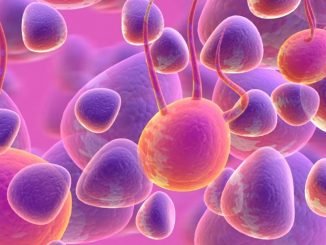
The naturally occurring protein GIV prevents immune overreaction and supports a mechanism critical for survival in mouse models of sepsis and colitis.
Washington [US] : Researchers at the University of California San Diego School of Medicine found that an atom called Girdin, or GIV, goes about as a brake on macrophages.
At the point when the group erased the GIV quality from mouse macrophages, the invulnerable cells quickly exaggerated to even modest quantities of live microscopic organisms or a bacterial poison. Mice with colitis and sepsis fared more terrible while without the GIV quality in their macrophages.
The specialists additionally made peptides that copy GIV, permitting them to close down mouse macrophages on order. At the point when treated with the GIV-imitate peptide, the mice’s incendiary reaction was tempered.
“At the point when a patient passes on of sepsis, the person in question doesn’t bite the dust because of the attacking microscopic organisms themselves, however from an eruption of their insusceptible framework to the microbes,” said senior creator Pradipta Ghosh, MD, educator at UC San Diego School of Medicine and Moores Cancer Center.

“It’s like what we’re seeing now with risky ‘cytokine tempests’ that can result from disease with the novel Covid SARS-CoV-2. Macrophages, and the cytokines they produce, are the body’s own safe animating specialists and when delivered in unreasonable sums, they accomplish more mischief than anything,” included Ghosh.
Delving further into the instrument at play, Ghosh and group found that the GIV protein ordinarily cozies up to an atom called Toll-like receptor 4 (TLR4). TLR4 is stuck directly through the cell layer, with bits jabbing inside and outside the cell. Outside of the cell, TLR4 resembles a radio wire, looking for indications of attacking microorganisms.
Inside the cell, GIV is settled between the receptor’s two “feet.” When set up, GIV keeps the feet separated, and nothing occurs. At the point when GIV is eliminated, the TLR4 feet contact and commencement a course of safe animating signs.
Ghosh’s GIV-mirroring peptides can replace the protein when it’s missing, keeping the feet separated and quieting macrophages down.
“We were astonished at exactly how liquid the insusceptible framework is the point at which it experiences a microbe,” said Ghosh, who is likewise head of the Institute for Network Medicine and leader overseer of the HUMANOID Center of Research Excellence at UC San Diego School of Medicine.
“Macrophages don’t have to sit around and energy delivering pretty much GIV protein, they can quickly dial their reaction up or down basically by moving it around, and it gives the idea that such guideline occurs at the degree of quality record,” included Ghosh.
Ghosh and group intend to explore the components that decide how the GIV brake stays set up when macrophages are resting or is taken out to mount a reaction to a valid danger. To empower these examinations, the Institute for Network Medicine at UC San Diego School of Medicine as of late got another USD 5 million award from the National Institute of Allergy and Infectious Diseases, part of the National Institutes of Health.
Ghosh imparts this honor to her partners Debashis Sahoo, PhD, aide teacher at UC San Diego School of Medicine and Jacobs School of Engineering, and Soumita Das, PhD, partner educator of pathology at UC San Diego School of Medicine.

